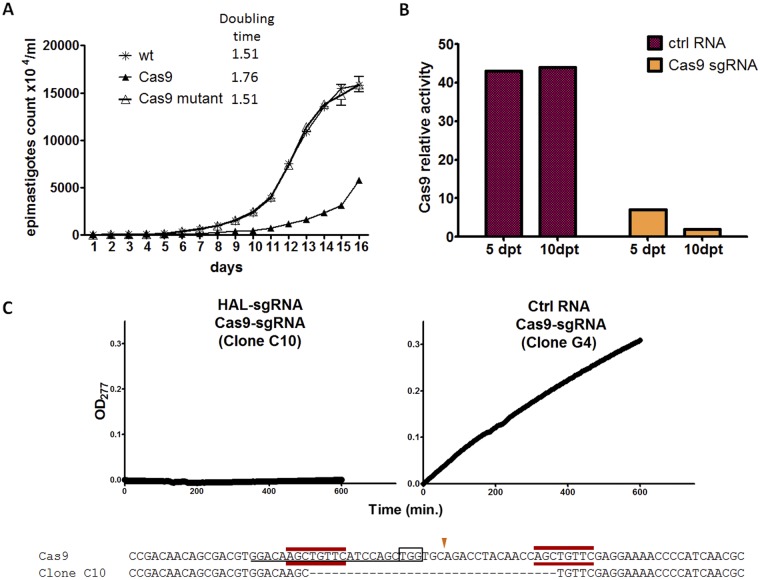FIG 6 .
Cas9 expression negatively impacts growth of T. cruzi epimastiogtes but could mediate disruption of its own coding sequence. (A) Growth curve of eGFP-labeled epimastigotes that do not express Cas9 (wt), expresses Cas9, or have had Cas9 knocked out by transfecting Cas9-targeting sgRNA. Parasites with stable Cas9 expression had a significantly greater doubling time compared to WT or Cas9-disrupted parasites. (B) Cas9 activity was abolished by 83% and 95% on day 5 and day 10 posttransfection (dpt), respectively, with Cas9-targeting sgRNA, as determined in an eGFP disruption assay, demonstrating that Cas9 could mediate disruption of its own coding sequence. (C) HAL activity determined by rate of urocanic acid formation (measured as the optical density at 277 nm [OD277]) in lysates of clonal epimastigote lines from parasites cotransfected with Cas9 gene-targeting sgRNA, HAL gene-targeting sgRNA, or control (Ctrl) RNA. Sequencing of the Cas9 gene in clone C10, which lacked HAL activity, confirmed the disruption of Cas9, thus demonstrating knockout of both the Cas9 gene and HAL gene in parallel.

